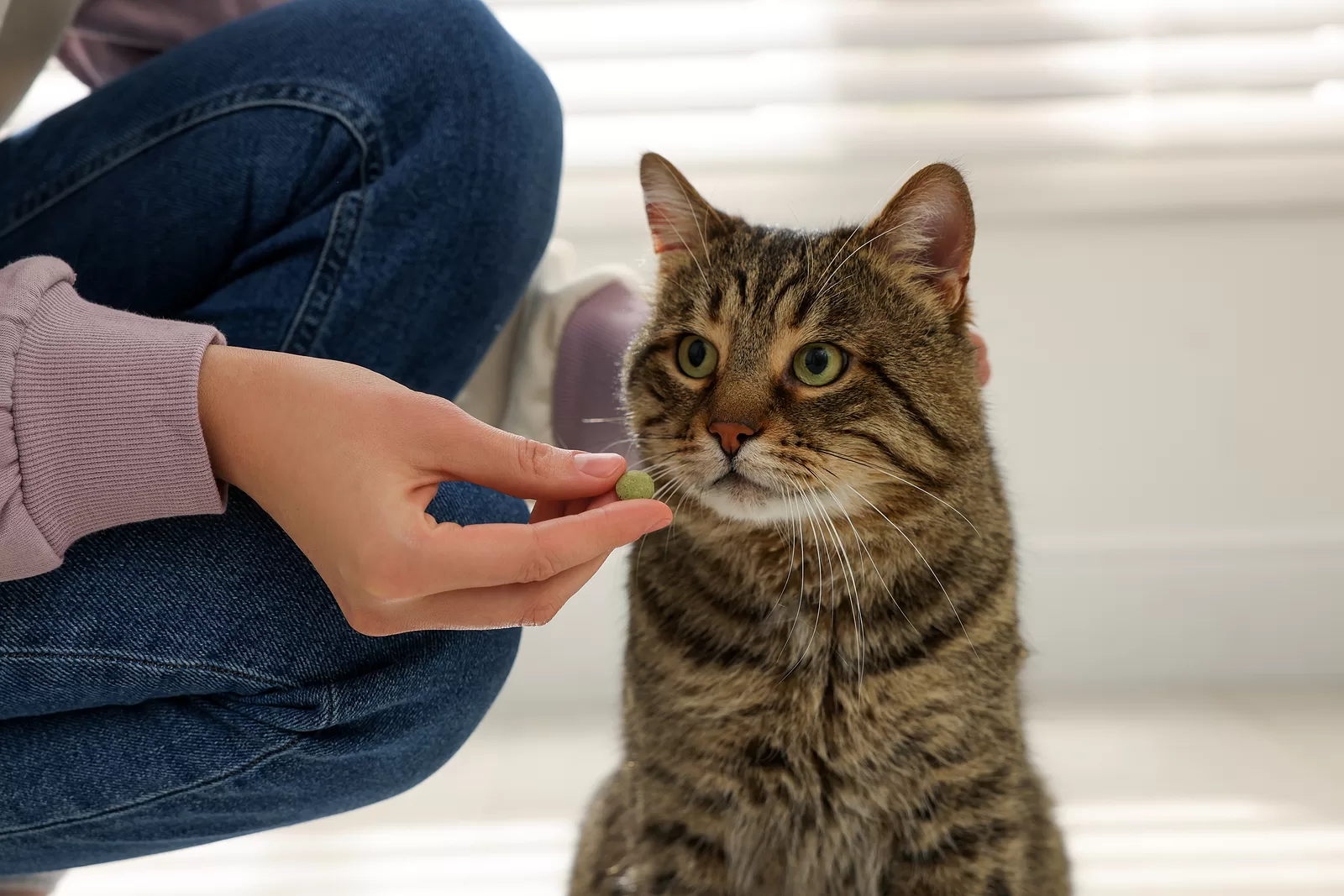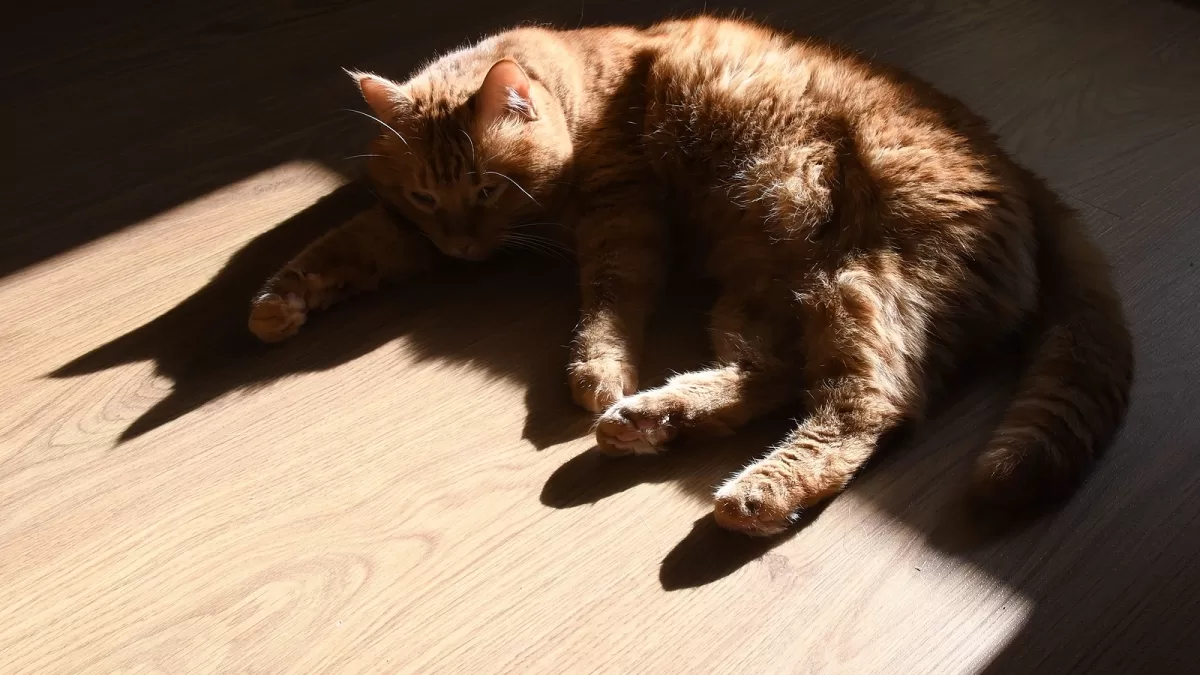Fluoxetine, sold under the brand name Prozac, is not just used by people. Cats also are prescribed this drug to treat a variety of behavioral issues. The only FDA-approved use of fluoxetine in animals is for treating separation anxiety in dogs. However, it is used off-label to treat cats suffering from aggression, obsessive-compulsive behaviors, anxiety, hyperactivity, and more.
What is Fluoxetine/Prozac?
Fluoxetine is a serotonin reuptake inhibitor (SSRI), which basically increases serotonin levels by preventing them from being reabsorbed. It does not work on other neurotransmitters and mostly just has an effect on serotonin. The drug was first approved as Prozac in 1987 for use in people to treat depression. In 2007, the drug was approved as Reconcile® with an indication for treating separation anxiety in dogs (in conjunction with behavioral modification).
SSRIs are one of four main medication types used to treat behavioral issues in cats. The other medications used are MAOIs, tricyclic antidepressants, and benzodiazepines. The use of SSRIs to treat anxiety in a pet needs to be combined with behavioral modification.
Treatment Methods for Anxiety in Cats
While Prozac for cats is effective, it is not the only method used to manage anxiety and behavioral issues in cats. Usually, multiple approaches are used which may or may not include medication. Problems like aggression and fearfulness can vary in intensity and how they present in different pets. There may be changes to the pet’s environment such as minimizing stressors that can work to ease the problem. It may be as simple as moving a litter box to a new location.

Order fluoxetine for your cat for as little as $2 per dose.
✓ Each prescription custom-made for your cat.
✓ Fast turn-around and shipping to your home.
Reward-based training with treats and be a great benefit to many cats. This can be useful, for example, when introducing a new cat into the house. This type of training involves the use of treats (whatever your cat likes the most, like tuna), to provide positive reinforcement for the desired behavior. Specialists agree that consistency and timing are important to successful reward-based training.
If a cat is known to have stress reactions to changes, it may benefit them to start fluoxetine 1-2 weeks before the event. For example, if you know that you will be moving to a new residence this may cause anxiety for your cat. Starting medication before the change will allow the medication time to work and ease the transition.
It is important to find if there is some other reason besides anxiety for your cat’s behavior like a medical condition. A veterinarian can determine if issues like failing to use a litter box are related to anxiety or another health concern.
Fluoxetine Side Effects for Cats
In general, veterinarians say that it is safe for cats to use this drug long-term although there are some potential side effects. Certain pre-existing conditions may prevent your cat from using fluoxetine including liver or kidney disease, diabetes, seizure disorders, and other medical conditions. Side effects of this drug in cats can include loss of appetite, seizures, gastrointestinal issues, drooling, panting, incoordination, and more.
Fluoxetine Prescribing by Veterinarians
In a study of the prescribing patterns of veterinarians, it was found that of 127 initial respondents, 106 prescribed fluoxetine for dogs and/or cats. It was found that for cats, the primary reasons fluoxetine was prescribed were to treat elimination behaviors, anxieties, aggression, dermatologic/grooming, and compulsive disorders. The majority of veterinarians prescribe fluoxetine to be used once every 24 hours – either in the morning or at night.
Compounding Fluoxetine
There are no FDA-approved dosages of fluoxetine for cats, so veterinarians sometimes use the services of a compounding pharmacy to make the drug in unique dosages and forms. A smaller dosage can be made to start your cat at the lowest dose possible, which can gradually be raised over time if necessary. A compounding pharmacy can also create customized dosage forms like treats or liquids to make administering the medication easier.
For cats, the recommended dosage of fluoxetine is usually 2mg to 5mg taken daily. Note that the lowest form available commercially for dogs is 8mg (Reconcile® dosages are 8, 16, 32, and 64mg). The dosage needed for cats is lower than is required for dogs. This makes compounding pharmacies essential in getting the right dose for your cat to be effective and minimize side effects.
Most veterinarians who prescribed fluoxetine for cats prescribe either a generic or compounded form of the drug. Compounding pharmacies can make this drug in an oral form like a treat or liquid or in a transdermal form. It has been found that transdermal forms of fluoxetine are effective however the bioavailability is significantly lower than when the drug is given orally.
You should never give your cat medication without consulting your veterinarian. Administering an incorrect dose to a cat or giving them a medication that is contraindicated for a medical condition they have can have serious adverse effects. Usually, this drug can take up to 6-8 weeks to be most effective, so if it does not work immediately it should not necessarily be discontinued. Taking your cat off of medication too quickly can also have adverse effects.
Articles
The use of fluoxetine by veterinarians in dogs and cats: a preliminary survey – Vet Record Open
Living with an anxious cat and long-term use of Prozac (fluoxetine) – NorthStar VETS

